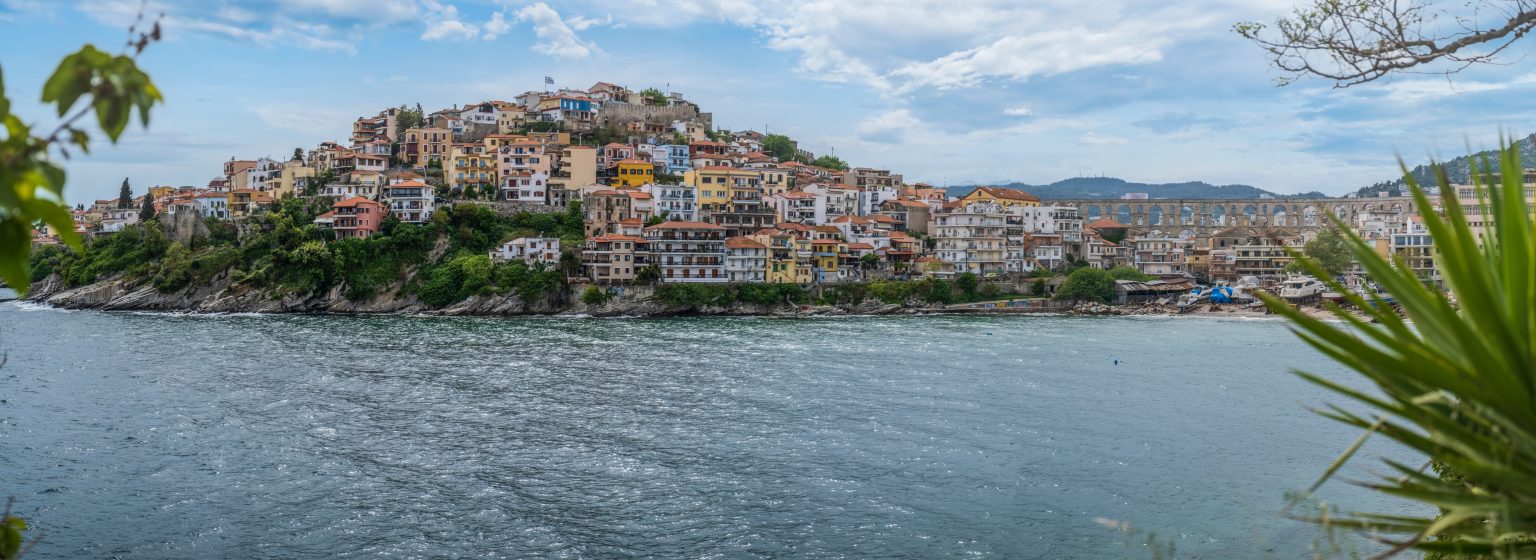The city of Kavala in Northern Greece, which rises up from the sea like an amphitheater, is a hidden gem with a rich history and stunning surroundings.
This coastal city and its vicinity, which have a population of around 70,000 people, serves as the eastern gateway to Macedonia, earning it the moniker “Thermopyles of Macedonia.”
Kavala, divided into the Palia Poli (Old Town) and the Nea Poli (New Town), is located on the Bay of Kavala, across from the island of Thassos, and on the Egnatia motorway, about an hour and a half east of Thessaloniki.
In antiquity, the city was known as Neapolis (meaning “New city,” as were many Greek colonies). It was renamed Christoupolis (“City of Christ”) during the Middle Ages. It was a province of the Second Bulgarian Empire. It was part of the Ottoman empire for centuries before being occupied by Bulgaria at the beginning of the twentieth century.
Following the Greco-Turkish War of 1919-1922, the city entered a new era of prosperity as a result of the labor provided by the thousands of refugees, who had relocated to the area from Asia Minor. Both industrial and agricultural development occurred.
Kavala became well-known for its tobacco processing and trading. Many buildings from that era related to tobacco storage and processing have been preserved in the city.
Here are a few of the top things to see and do in Kavala.
The Kavala Castle
Kavala was surrounded by a defensive wall beginning in the fifth century BC. During the reign of Andronicos II Palaeologos in 1307, the long walls from the sea to the top of the hill were built, which was a major modification.
When the Turks captured the city in 1391, they completely destroyed the Byzantine castle. The Ottomans rebuilt the castle in 1425, and what we see today is largely the result of that reconstruction.
The Aqueduct of Kavala
The Kavala aqueduct, also known as the Kamares, is a well-preserved structure in Kavala that is clearly one of the city’s landmarks. While the aqueduct is thought to be of Roman origin, the current structure dates from the 16th century.
Kavala Tobacco Museum
Kavala was the largest tobacco processing and exporting center in the Balkans from the mid-nineteenth century until 1950. The Museum is unique in that it not only contains an exhibition on the processing of Oriental tobaccos (which is not found in any other museum in the world), but it is also a museum that showcases the region’s economic and social history.
Municipal Tobacco Storage Facility
The Municipal Warehouse is one of Kavala’s most interesting buildings. Kiazim Emin & Cie was established in 1910 by the businessman and tobacco merchant Kiazim Emin.
The structure is designed in an Ottoman style known as “Ottoman neoclassicism,” with a strong influence from European neoclassical architecture.
Wander around Kavala’s Old Town
Walk through the picturesque lanes of the Old Town to the Panagia peninsula, which appears to have jumped out of the pages of a fairy-tale book.
Visit the Imaret
Mohammed Ali, the founder of Egypt’s last dynasty, established an imaret – a religious, educational, and charitable institution – in his hometown of Kavala in the early nineteenth century. It served as an Islamic seminary until 1902, as religious instruction was included in Muslim education beginning in 1846. Today, the complex hosts the Imaret Hotel, a five-star gem of hospitality.
Visit Via Egnatia
The military Roman road known as “Via Egnatia” passed through the city, allowing commerce to flourish. In 168 BC, Kavala became a Roman “civitas,” and in 42 BC, it served as a base for Brutus and Cassius before their defeat at the Battle of Philippi.
On his first trip to Europe, the Apostle Paul landed at Kavala.
Explore the ancient Philippi
Philippi, a UNESCO World Heritage Site just a few miles from Kavala, is linked to many exceptional historical figures and events that shaped the Western world. Beautiful monuments that still stand today bear witness to the long history of the cultures that interacted and flourished in this region.
Swim in the turquoise waters of Kalamitsa Beach
Kavala’s beaches have it all: calm waters, sandy beaches, vast coastlines, tavernas right on the water, and sporting activities. Batis, Tosca, Kalamitsa, Rapsani, and Perigiali are the most popular.
Visit the island of Thassos
Kavala is an excellent base for a quick trip to one of Northern Greece’s most beautiful islands, verdant Thassos. Surrounded by the Aegean Sea’s crystal blue waters, you can immerse yourself in a breathtaking natural environment while also experiencing a laid-back culture that warmly welcomes every visitor.
